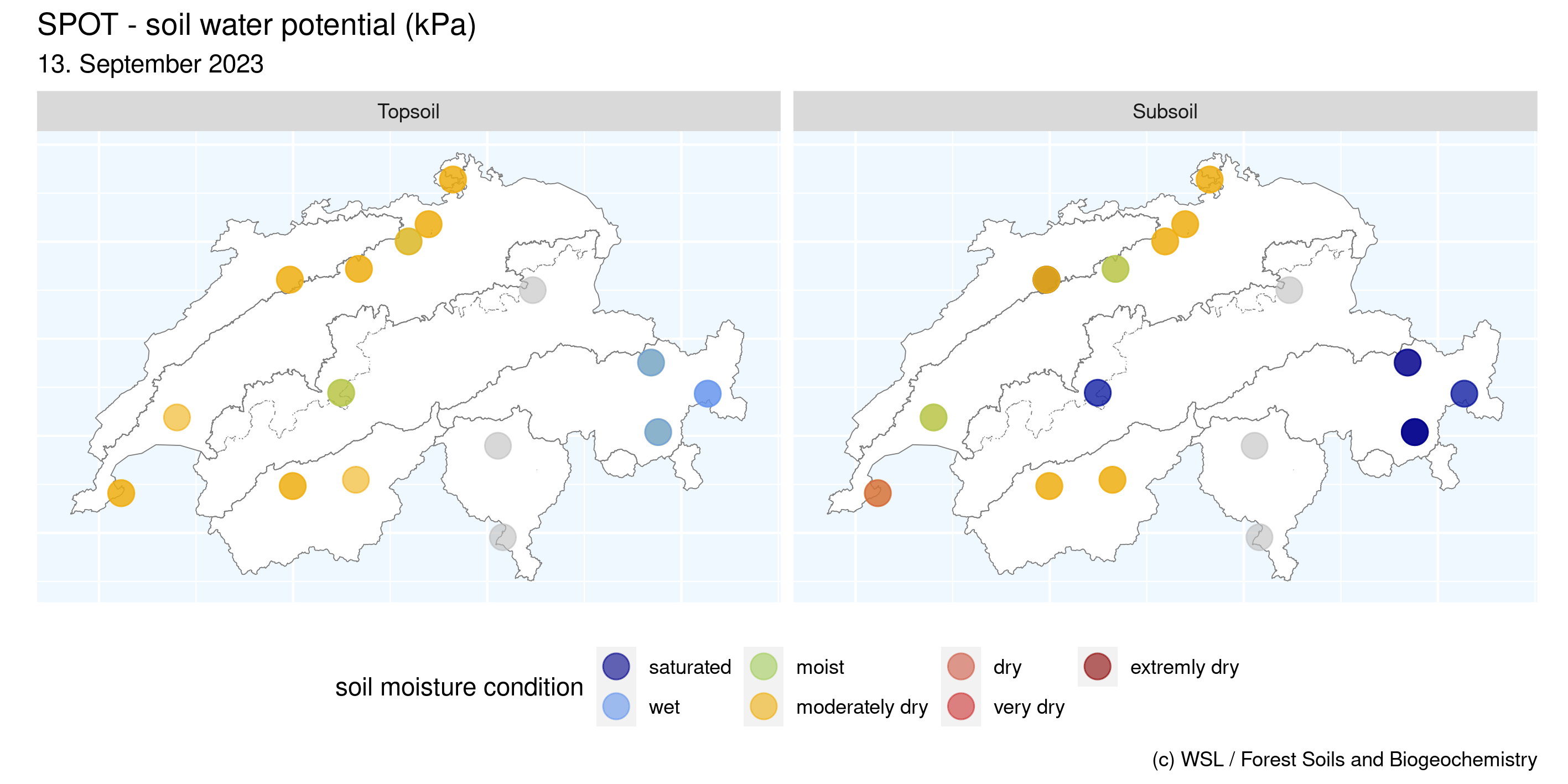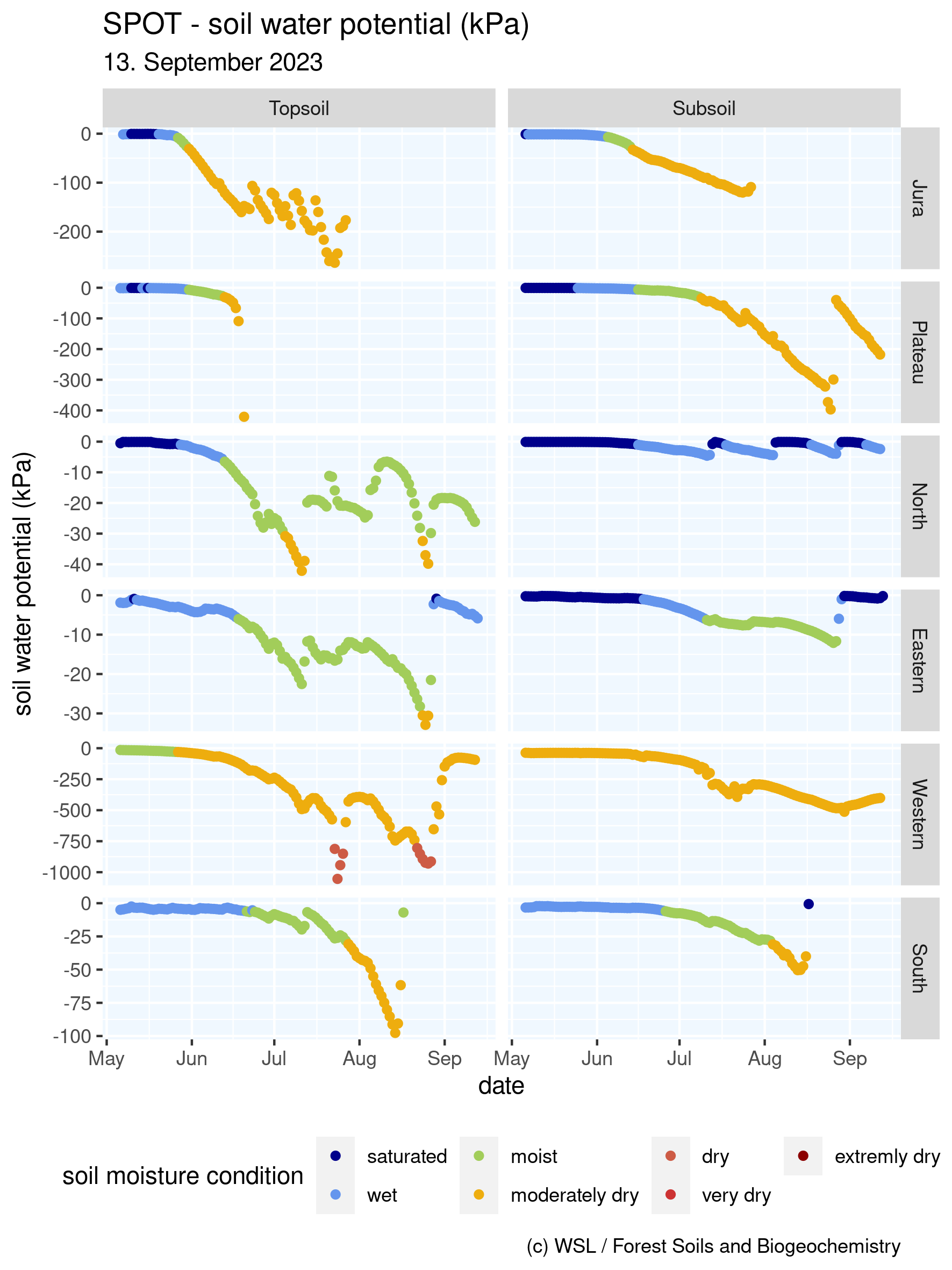SwissSPOT - Measuring the soil water situation on LWF sites
2018 - 2028
FinancingSoil water is essential for plants and soil biota, resulting from the interaction of climate, site conditions, and vegetation. Climatic changes affect the soil water balance, the availability of water and nutrients and ultimately, the health of forests. The basis for quantifying soil water fluxes is the soil characteristic curve, which is the relationship between water content (θ) and soil water potential (ψ). At 16 LWF sites across Switzerland, the measurements of both parameters (θ, ψ) were renewed and extended in space and soil depth (up to 2 m).
Soil water potential (kPa) defines the ability of water to move through the soil or to be extractable by trees. A lack of water can enhance forest fire risk and has direct (e.g. defoliation and increased mortality) and indirect effects on forests (e.g. increasing the susceptibility to insect attack, diseases or windthrow). During moist conditions, on the other hand, contaminates and nitrate can be leached to the groundwater. Wet soils are also more susceptible to soil compaction by heavy machinery and risk for slope instabilities, and soil erosion rises.
Here, we defined seven classes of soil water potential:
Current forest soil moisture situation ¶
The map displays the averaged daily soil water potential measured for topsoil (<=50cm) and subsoil (>80-200cm) at the SwissSPOT forest stations (see locations). Colours correspond to the classes defined above, polygons to the biogeographic regions of Switzerland (Gonseth et al., 2001). Stations with temporary no data connection (NA) are displayed in grey.

Temporal development ¶
The temporal dynamic of the soil water potential in topsoil (<=50cm) and subsoil (>=80-200cm) is displayed for six biogeographic regions of Switzerland. The region Jura is represented by the sites Bettlackstock, Lägeren, Neukirch; the Swiss-Plateau includes the sites Othmarsingen, Vordemwald, Lausanne and Jussy; the Alpine North Flank consists of the sites Beatenberg and Schänis; in the Eastern Central Alps we have the sites Davos, Celerina and Nationalpark; in the valleys of the Western Central Alps the sites Lens and Visp; and on the Alpine South Flank the two sites Chironico and Novaggio.


